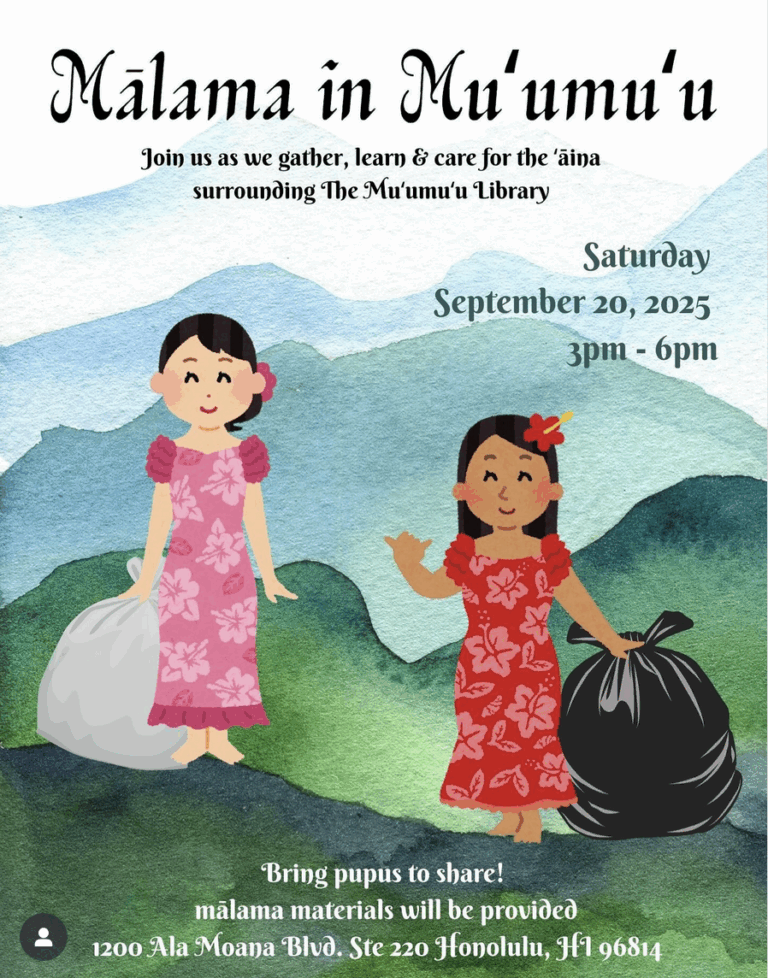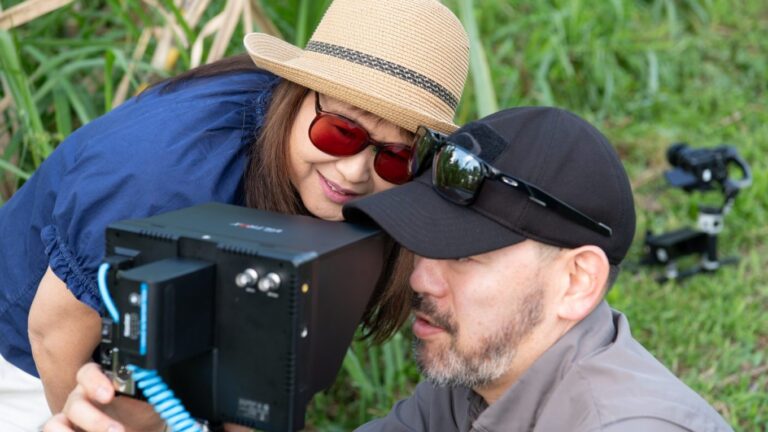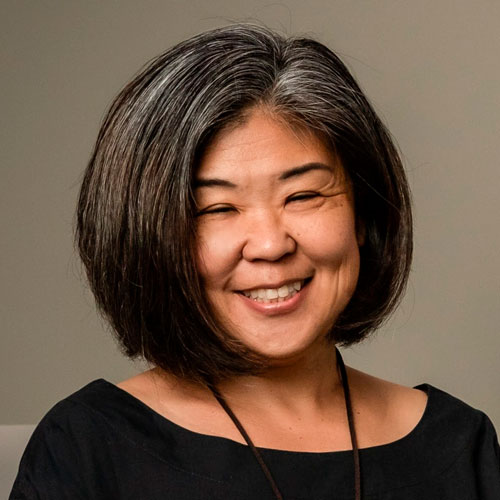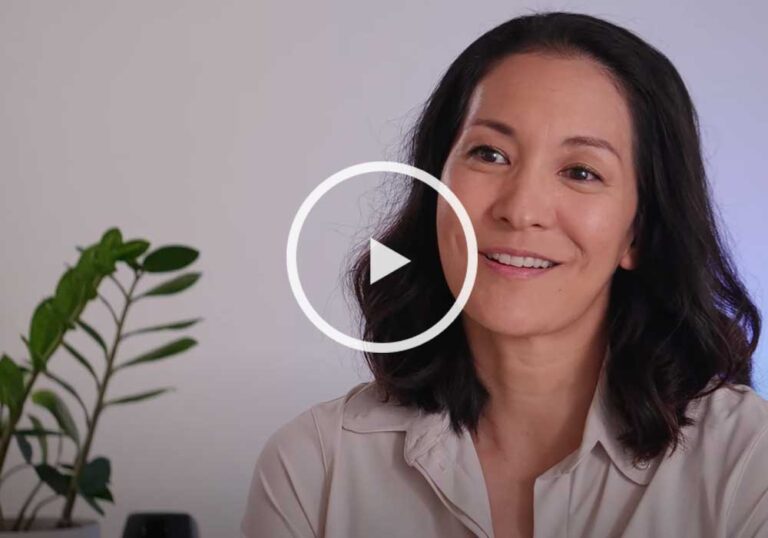By Anya Kamenetz
August 8, 2024
Editor’s note: This article was originally published by Teen Vogue. It is republished here with permission.
When Laurel Tamayo was growing up on the Hawaiian island of Oahu, some of her favorite memories included visiting her extended family on Maui. They would stay at the beach all day, “talking story” (a Hawaiian expression for passing the time chatting), swimming in the sparkling ocean, eating Spam musubi, and drinking passion fruit juice under the coconut trees.
But when she came back from college to visit in the summer of 2022, things felt different. That particular day, the heat was so intense that when she got out of the water after snorkeling, her plastic iced coffee cup had melted and morphed on the sand. “I remember in that moment thinking, Wow!” Tamayo recalls, with a strained smile, revealing her braces. “This beautiful place that I imagined taking my future kids and future grandkids to one day, may be a place that’s too unbearably hot to enjoy as the effects of climate change get worse.”
“And it’s sad because I had no idea when I was having that moment, that a year later the deadliest wildfire in modern US. history would happen, and take the home of my grandparents, auntie and uncle, and cousins,” she adds.
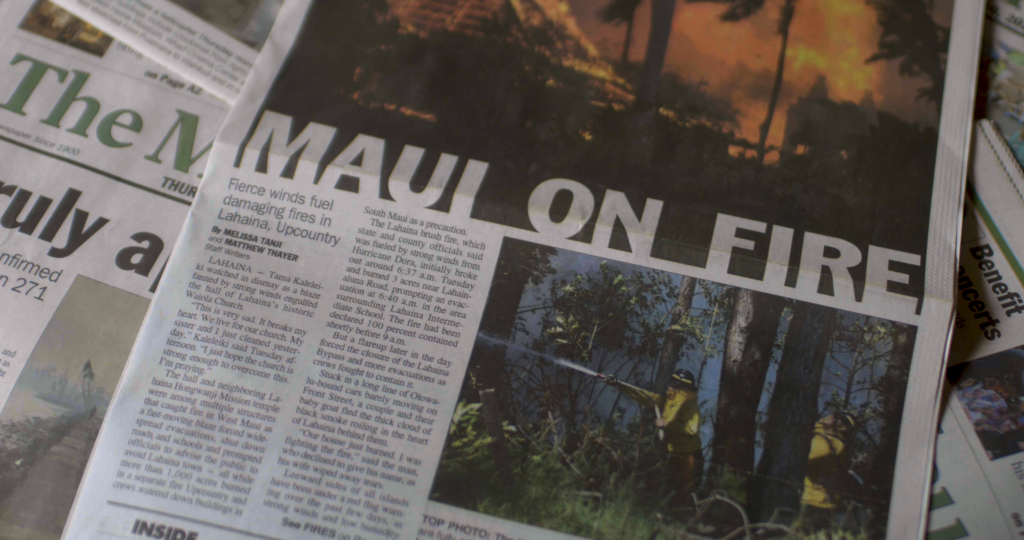
The Lahaina wildfire, which started one year ago on August 8, 2023, and killed 102 people, is the subject of Tamayo’s first professional documentary film, Healing Lahaina. It is set to debut later this year. The short film features Tamayo’s family and neighbors telling a story of loss, resilience, mutual aid, and, she says, “the Aloha spirit.”
Tamayo’s life has prepared her in an almost eerie way for this project. It all started her senior year of high school when she picked what she thought would be an easier Advanced Placement class. “It’s funny ’cause at my school AP environmental science was considered the ‘slacker’ AP [course],” she recalls. That class changed her life when her teacher showed a documentary film called Racing Extinction. It showcased the fate of a bird native to Kauai, another Hawaiian island, called the ʻōʻō.
“There’s a scene where a man was playing a bird call…and he says [something like], ‘This is a mating call, but it’s one that will never be answered because he is the last of his species,’” Tamayo says. “And I remember I was like, that’s so sad. How have I never heard of this bird before, being born and raised in Hawaii? And why didn’t anyone do anything about it?”
Tamayo became a vegetarian and then a vegan. She started reading everything she could about climate change and she headed to Chapman University in California, where she majored in environmental science and policy and minored in documentary film.
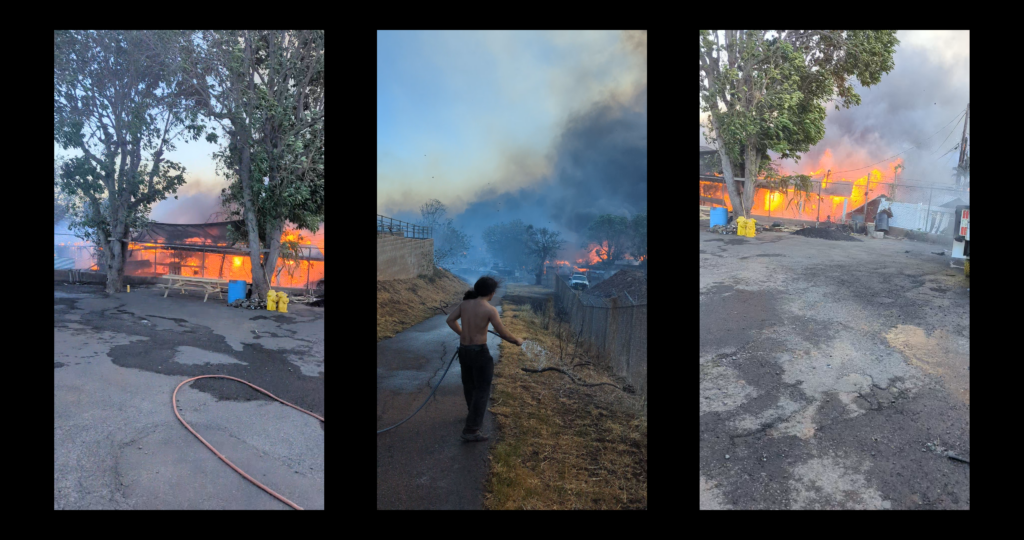
But in college, her life vision of being an environmental filmmaker had a little cold water thrown on it. “We kept having guest speakers in our class that were talking about how they’re broke and their films took 10 years. And I was like, Oh, man, maybe I’m not cut out for this life.” While studying in New Zealand, she met a woman who worked on the parallel path of impact producing: organizing screenings, producing social media, creating resources, and more to amplify the social message of a film. That woman helped connect Tamayo with opportunities and while still in college she worked on the impact campaign for I Am Greta, a documentary about the Swedish youth climate activist, Greta Thunberg.
Directing a film for the first time outside of a college class was a far-off notion when Tamayo woke up early one morning last August at home in Los Angeles and grabbed her phone to check Instagram. She saw that someone had posted to Stories about the Lahaina fire and Tamayo immediately texted a family group chat to check in. The next few days were nerve-racking. The fire destroyed fiber optic lines, causing cell towers to fail. In the chaotic process of evacuation and taking shelter, occasionally her relatives were able to catch a signal by going onto the beach, but in between, the rest of the family had no news at all.
“The different evacuation sites on the island were posting [photographs of] sign-in sheets,” to help people locate missing friends and family, Tamayo says. “And I remember scrolling through pictures of those, trying to look for [my relatives’] names, and not finding them and just being so stressed. It was scary to be so far away and not know what was happening.” Her aunt, uncle, and cousin had taken shelter at the Hyatt Regency, where her uncle and cousin worked as security guards. Her grandparents spent the first night in their truck in the parking lot of a supermarket, then joined the rest of the family at the hotel.
Tamayo’s family history is intimately connected with the economic decisions and the ecological ripple effects that contributed to the fire. Her grandfather came to Maui from the Philippines in the 1960s to work on a sugarcane plantation. When those plantations were largely abandoned by the 1990, invasive grasses replaced them. And with the increasing heat and drought of climate change, the grasses quickly dry into tinder that fuels bigger, faster-spreading fires.
A few months after the fire in Lahaina, one of Tamayo’s friends, Tehya Jennett, asked if she was going to tell her family’s story. Tamayo thought about it later that night: She didn’t want to harm her community by being exploitative and she didn’t feel ready to be a director. There was so much she didn’t know. But then she thought about how this project was the intersection of all her passions and how, just maybe, the pain her family and their community had gone through could serve a broader purpose. She could show the way the community had swiftly come together in mutual aid and recovery. Maybe it could give some hope to others.
Her friend became her producer. Tamayo raised half her budget through crowdfunding and won a $25,000 award for Gen Z advocates. They shot the film over four days.
One of the heroes of the film is Jona Versola, who stayed in town and sprayed water to put the fires out and save his and his neighbors’ houses. “There are things I think we could learn from Hawaii,” says Tamayo, “and how they reacted so quickly to bring aid to people.” Tamayo also filmed people tending new plantings and teenagers doing disaster preparedness training, learning search-and-rescue skills, and practicing firefighting.
“There are a lot of people wanting to tell a story about the Lahaina fires. And probably most of them aren’t people who have direct connections to the island or to the people who were impacted. So I feel like it’s the perfect project for her,” says Tamayo’s friend and mentor Meghan Welsch, who has worked as an impact producer on films like The Social Dilemma. “She’s being very intentional too, about how she’s engaging the community…[for example], by having an entirely local crew, which I feel speaks so much to who she is as a person… She’s just one of the most passionate people that I’ve had the pleasure of knowing.”
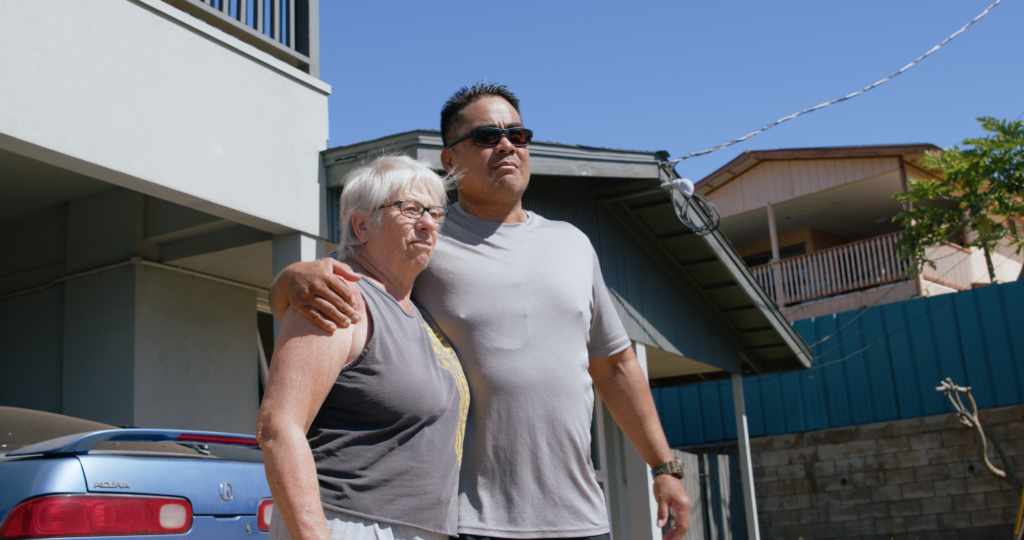
In a scene from an early cut of the film, Tamayo and her aunt Miriam don bright-white Tyvek suits. They stand out against the blue sky, a backdrop of gray rubble, and a single, struggling palm tree. They are sifting through the ruins of Tamayo’s grandparents’ home for anything salvageable. They come upon a small, bent, metal photo frame in the shape of a tree—a family tree. The photos it once held were incinerated. “Literally, we have nothing,” says Miriam in an interview. “Three days later, when we went to check it out, it was smoldering.… It was heartbreaking to see that.”
Tamayo’s great-grandfather, grandfather, and great-uncles built the house with their own hands. It was home to three generations—grandparents, aunt, uncle, cousins. After the fire, they all lived in three rooms at the Hyatt for roughly 10 months. Now they are staying nearly an hour’s drive away.
Another underlying theme of the film is Maui’s dependence on tourism. It’s in direct opposition to locals’ needs for affordable housing and other basic resources, and exacerbated by the recovery. Maui is working toward banning thousands of short-term rentals to open up more housing for people who live and work on the island.
The Federal Emergency Management Agency (FEMA) has ended its program to house fire victims in hotel rooms. There have been some complaints about the Direct Lease program, which is intended to shelter people in more long-term units for up to two years. Some people are being served foreclosure notices on homes charred to ruins. Tamayo’s father is an architect and working on plans to rebuild their home, but many other families don’t have access to that kind of help.
Returning home is still a far-off dream for many folks. For Tamayo’s grandfather, it will never happen. He was diagnosed with pancreatic cancer in January 2024 and died one month later.
While unstinting on what was lost, Healing Lahaina also shows hope. “The people of Lahaina, they are great,” says Miriam Tamayo. “The kindness that so many people showed was overwhelming. So many people came together, even people who lost their homes, they were there for each other, and they helped each other…just without even saying words. Just a hug was helpful, you know, to know that we’re gonna be okay.”
Tamayo hopes that others will not only be inspired to support Maui but also become more prepared for disasters that may hit closer to home as climate change gets worse.
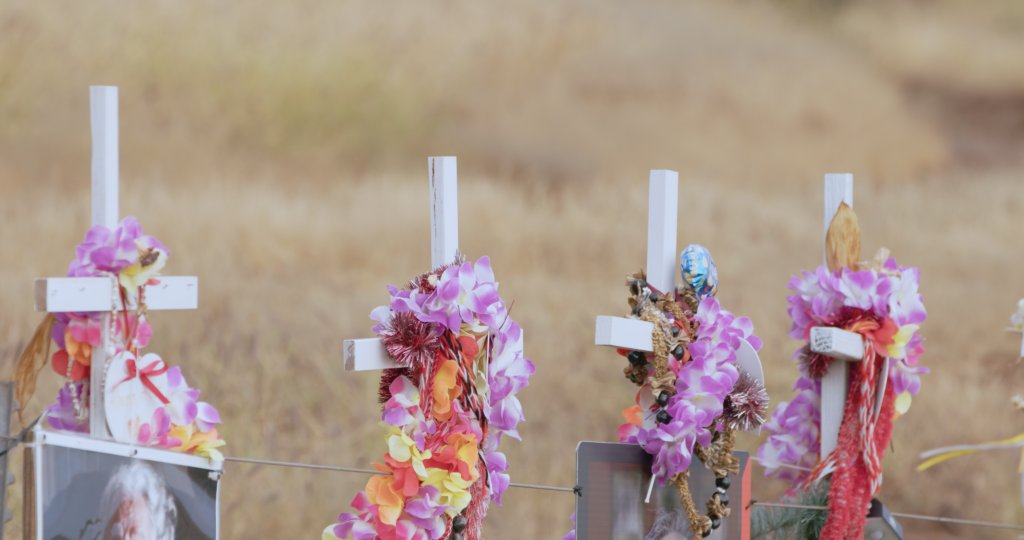
Screenings of “Healing Lahaina”
Hawaii International Film Festival (HIFF):
Consolidated Theatres Kahala on Tuesday, October 8 at 6 p.m. and Thursday, October 10 at 3 p.m.
Visit hiff.org for updates on neighbor island screenings, to purchase tickets, and information about other films in HIFF.
L.A. Climate WeekPreview of Healing Lahaina and panel on community resilience and storytelling will be held in Culver City, CA on Sep. 12. For more information visit Healing Lahaina: Film Preview & Panel · Luma.



